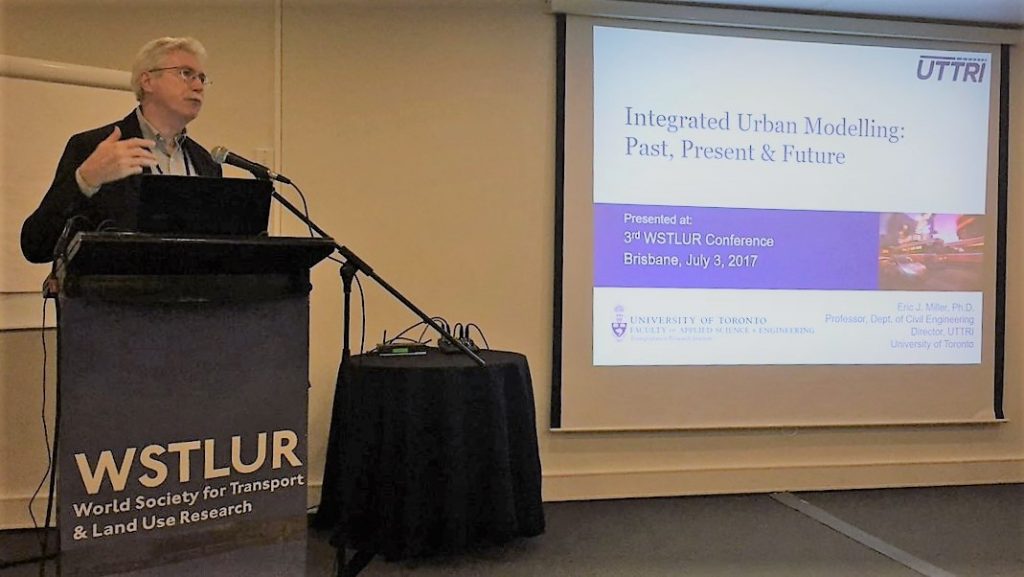
Professor Eric Miller delivered a keynote address entitled “Integrated urban modelling: Past, present and future” on Monday, July 3 at the World Symposium on Transport and Land Use Research 2017 (WSTLUR) in Brisbane, Australia. An abstract of the talk is shown below.
Integrated urban modelling: Past, present and future
Keynote Address, 2017 Worldwide Symposium on Transport and Land Use Research (WSTLUR) Conference, Brisbane, Australia, July 3, 2017.
Eric J. Miller, Ph.D., Professor, Department of Civil Engineering, Director, University of Toronto Transportation Research Institute (UTTRI), University of Toronto, 35 St. George Street, Room GB305A, Toronto, Ontario, Canada M5S 1A4. Tel: 416-978-4076 | Fax: 416-978-6813 | E-mail: miller@ecf.utoronto.ca.
Abstract
Integrated urban models (IUMs) (aka integrated transport-land use models) have been developed and (sometimes) applied for over 50 years, dating back to the early days of transportation-related modelling in the early 1960’s. IUMs have been criticized over this same time period on both practical and theoretical grounds (Lee, 1973, 1994; Timmermans, 2003; among others). At the same time, continuing, very significant technological developments have made possible the development, implementation and use of such models in operational planning settings in various countries worldwide (HBA Specto, 2013), the criticisms of Lee and others notwithstanding. A major review of the IUM state of the art and recommendations for evolution of this state was prepared by the author and colleagues 20 years ago (Miller, et al., 1998). This paper presents an update of the 1998 report in terms of:
- Summary of progress in the field over the past 20 years.
- A critical assessment of the current IUM state of art and practice.
- Needs and prospects for future development in this field.
The paper argues that a case exists that the current modelling state is in “the doldrums,” similar to concern raised by Pas in his seminal 1990 critique of activity-based travel models (Pas, 1990). It then proceeds to outline research and development needs to exploit current and emerging data, computing and methodological developments that hold promise for the development of a much more powerful and useful “next generation” of IUMs.
References
Lee, D.B. (1973) “Requiem for large scale models,” Journal of the American Institute of Planners, 39, 163-178.
Lee, D.B. (1994) “Retrospective on large scale urban models,” Journal of the American Planning Association, 60, 35-40.
Miller, E.J., D.S. Kriger and J.D. Hunt, Integrated Urban Models for Simulation of Transit and Land-Use Policies, Final Report, Transit Cooperative Research Project H-12, Toronto: University of Toronto Joint Program in Transportation, September, 1998. Published online by the Transportation Research Board, Washington, D.C.
Pas, E.I. (1990) “Is travel demand analysis and modelling in the doldrums?” in P.M. Jones (Ed.)
Developments in Dynamic and Activity-Based Approaches to Travel Analysis, 3-27, Gower,
Aldershot.
Timmermans, H. (2003) “The saga of integrated land use-transport modeling: how many more dreams before we wake up?” Conference keynote paper, 10th International Conference on Travel Behaviour Research, Lucerne.
